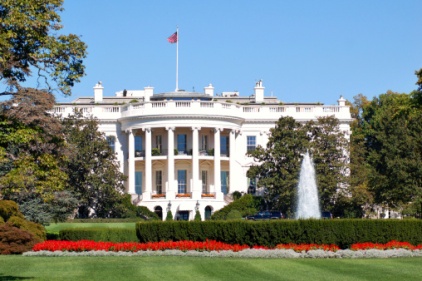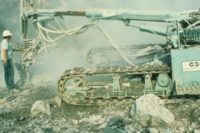OSH pros demand end to silica standard delay
Two-year delay at White House angers occupational health experts

 In the two years that a proposed rule to protect workers from exposure to dangerous levels of silica dust on the job has been held up by the White House, more than 100 workers have died and thousands have been sickened by preventable exposure to silica dust.
In the two years that a proposed rule to protect workers from exposure to dangerous levels of silica dust on the job has been held up by the White House, more than 100 workers have died and thousands have been sickened by preventable exposure to silica dust.
That figure comes from the National Council for Occupational Safety and Health (NCOSH) which is demanding forward movement on the proposed Occupational Exposure to Crystalline Silica rule which has been stuck at the Office of Management and Budget’s Office of Information and Regulatory Affairs (OIRA) for 730 days – despite a review deadline of 90 days.
“American workers cannot afford to wait for the federal government to enact this commonsense rule,” said NCOSH Executive Director Tom O’Connor. “Each day that the federal government stalls, workers are needlessly exposed to dangerous levels of silica dust, which is one of the oldest known causes of work-related lung disease.”
Bureaucratic limbo
OSHA has been trying to strengthen rules limiting workers’ exposure to silica since the 1980s, but has been stymied by what the Council says is industry opposition. Its current proposal has been mired in bureaucratic limbo since 2000.
| "The Obama administration must push it through the bureaucratic logjam" |
Workers can be exposed to dangerous levels of silica dust through cutting, drilling, grinding, or otherwise disturbing material that might contain silica, such as during construction or mining jobs.
Studies have found a strong association between silica exposure and lung cancer, kidney disease and autoimmune system disorders. Yet, OSHA does not have a comprehensive, protective standard on the books to address it.
The National Institute for Occupational Safety and Health (NIOSH) estimates that 1.7 million workers in the U.S. are exposed to silica dust.
Just the cases "we know about"
“Those are just the cases we know about; many cases of silicosis go unreported,” according to a statement by NCOSH.
OSHA’s proposed rule would lower the legal limit of silica dust that workers are permitted to breathe and would require specific control methods, such as wet cutting and ventilation in certain situations. The proposed control measures are intended to be simple and low-cost.
Some states, such as New Jersey and California, have implemented safeguards, like banning dry cutting of masonry materials.
“America’s workers can’t wait any longer for OIRA to move on this,” O’Connor said. “It’s time for a national standard. The Obama administration must push it through the bureaucratic logjam.”
The National Council for Occupational Safety and Health is a federation of local and statewide organizations; a private, non-profit coalition of labor unions, health and technical professionals, and others interested in promoting and advocating for worker health and safety.
Looking for a reprint of this article?
From high-res PDFs to custom plaques, order your copy today!






